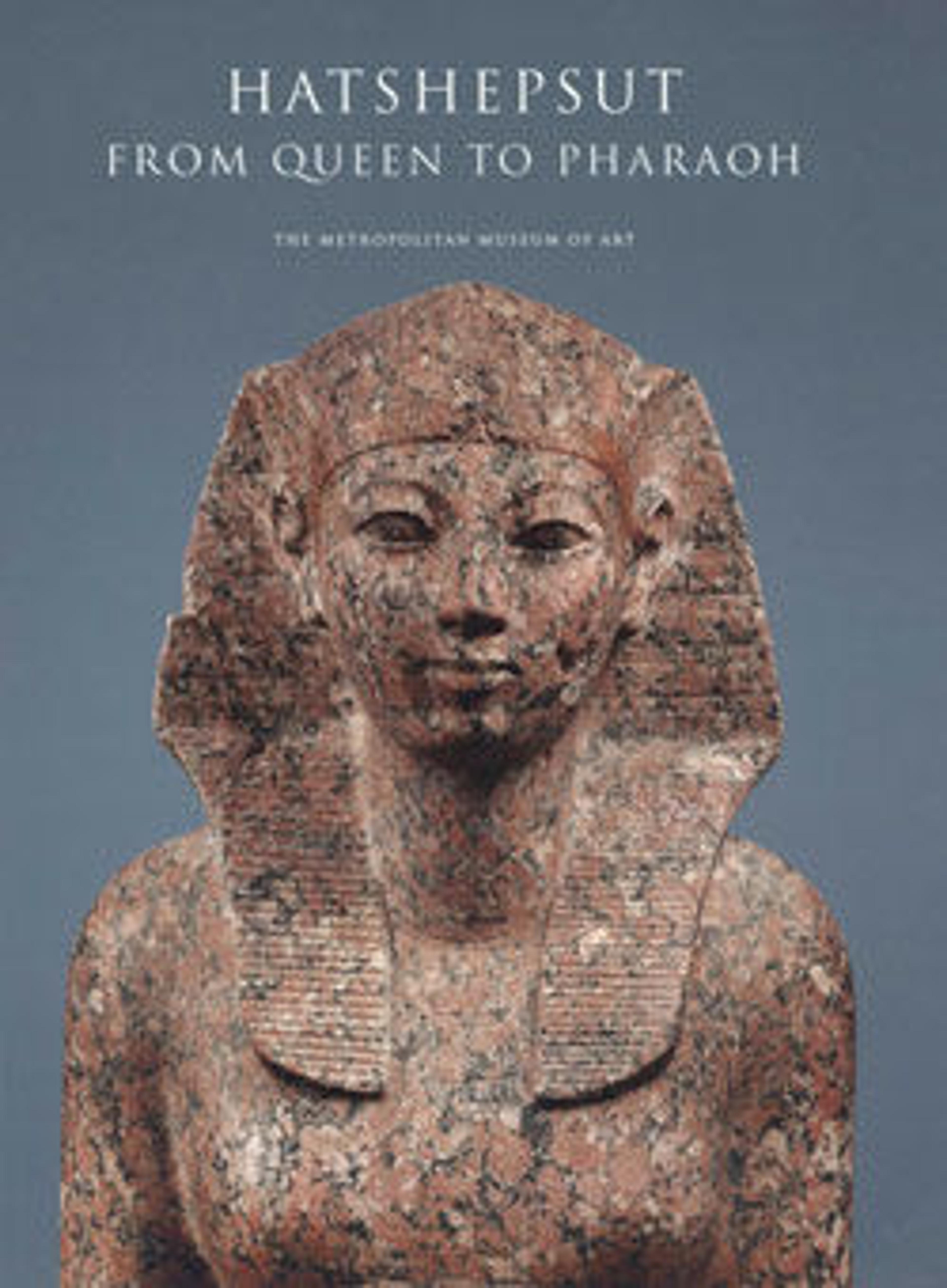Lower Part of a Statue
There is no inscription to identify the king depicted in this seated statue. However, the fact that it was found in fragments with the smashed statues of Hatshepsut suggests that this, too, represented the female pharaoh. For more than 1500 years before Hatshepsut ascended the throne, the ideal Egyptian king had been represented as a young man in the prime of life. This ideal applied whether the ruler was an old man, a young child, or a woman.
Two of Hatshepsut's statues depict her as a female ruler (29.3.2), but most of them depict her as the ideal king (30.3.1). However, this should not be taken as a sign that she was trying to fool anyone into believing she was a man. The inscriptions on the masculine statues generally included either a feminine grammatical form or her personal name, Hatshepsut, which literally means "Foremost of Noblewomen." She had also been in the public eye since childhood, first as "king's daughter" of Thutmose I, then as "king's principal wife" of her half-brother Thutmose II, then as regent to her nephew/step-son Thutmose III, and finally as senior co-ruler with the same king.
Two of Hatshepsut's statues depict her as a female ruler (29.3.2), but most of them depict her as the ideal king (30.3.1). However, this should not be taken as a sign that she was trying to fool anyone into believing she was a man. The inscriptions on the masculine statues generally included either a feminine grammatical form or her personal name, Hatshepsut, which literally means "Foremost of Noblewomen." She had also been in the public eye since childhood, first as "king's daughter" of Thutmose I, then as "king's principal wife" of her half-brother Thutmose II, then as regent to her nephew/step-son Thutmose III, and finally as senior co-ruler with the same king.
Artwork Details
- Title: Lower Part of a Statue
- Period: New Kingdom
- Dynasty: Dynasty 18
- Reign: Joint reign of Hatshepsut and Thutmose III
- Date: ca. 1479–1458 B.C.
- Geography: From Egypt, Upper Egypt, Thebes, Deir el-Bahri, Senenmut Quarry, MMA excavations, 1926–28
- Medium: Diorite
- Dimensions: H. 82 cm (32 5/16 in)
- Credit Line: Rogers Fund, 1931
- Object Number: 31.3.168
- Curatorial Department: Egyptian Art
More Artwork
Research Resources
The Met provides unparalleled resources for research and welcomes an international community of students and scholars. The Met's Open Access API is where creators and researchers can connect to the The Met collection. Open Access data and public domain images are available for unrestricted commercial and noncommercial use without permission or fee.
To request images under copyright and other restrictions, please use this Image Request form.
Feedback
We continue to research and examine historical and cultural context for objects in The Met collection. If you have comments or questions about this object record, please contact us using the form below. The Museum looks forward to receiving your comments.
